I’m on the hunt for blue-chip stocks to buy for safety in this volatile market. The problem is the definition of what makes a company blue chip varies. Some believe it’s consistent and increasing dividends. Others look to bottom-line profits or rock-solid balance sheets. In other words, it’s subjective.
Rather than spend excessive time settling on the best criteria for determining blue-chip stocks to buy for safety, I’ve selected seven names that appear in the holdings of one or more of the following blue-chip exchange-traded funds: Monarch Blue Chips Core ETF (BATS:MBCC), T. Rowe Price Blue Chip Growth ETF (NYSEARCA:TCHP) and Fidelity Blue Chip Growth ETF (BATS:FBCG).
As always, I’ll ensure that the selections provide reasonable sector diversification. In addition, the stock must have a positive annualized total return over the past one-year, three-year and five-year periods.
Here are seven blue-chip stocks to buy for safety and reduced volatility.
| NEE | NextEra Energy | $84.79 |
| LLY | Eli Lilly | $308.89 |
| AAPL | Apple | $150.70 |
| TSLA | Tesla | $303.35 |
| UNH | UnitedHealth Group | $521.02 |
| SO | Southern Company | $77.25 |
| COST | Costco Wholesale | $504.14 |
NextEra Energy (NEE)
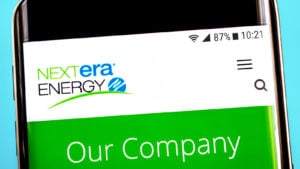
NextEra Energy (NYSE:NEE) is not only one of my favorite utility stocks but also one of my favorite stocks, period. It’s a traditional power company through Florida Power & Light, the country’s largest electric utility with more than 5.7 million customer accounts. It’s also the world’s largest generator of renewable energy from wind and solar through its NextEra Energy Resources subsidiary.
NEE has delivered an annualized total return of 2.9% over a one-year period, 17.8% over a three-year period and 19.5% over a five-year period, all significantly better than the S&P 500.
The company reported excellent second-quarter results in late July. Operating revenue of $5.18 billion was 32% higher than a year earlier. On the bottom line, operating income of $948 million was 86% higher than a year ago.
Analysts expect earnings per share to increase 12.6% this year to $2.87 and 7.7% next year to $3.09. Based on its current share price, NEE stock trades at 29.5x 2022 earnings and 27.4x 2023 earnings. Add in a 2% dividend yield and I’m not sure how you couldn’t like NEE stock.
Eli Lilly (LLY)
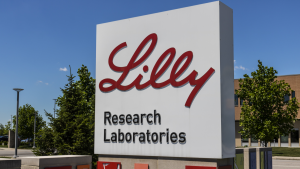
Eli Lilly (NYSE:LLY) is an Indianapolis-based large-cap pharmaceutical company. Ten years ago, its three top-selling drugs by revenue were Zyprexa (for treatment of schizophrenia), Cymbalta (for the treatment of depression and anxiety) and Alimta (for the treatment of lung carcinoma). Today, the company’s top three drugs’s are Trulicity (for diabetes), Taltz (for psoriasis) and Verzenio (for breast cancer).
As we discovered during the pandemic, the drug companies — typically viewed by consumers as uncaring, overcharging money machines — turned out to be lifesavers. Hopefully, the balance between overcharging and undercharging can be found in the future by federal and state governments.
In the meantime, Eli Lilly is doing just fine. In 2021, it had slightly less than $6 billion in free cash flow ($7.26 billion net cash provided by operating activities less $1.31 billion in purchases of property and equipment). That means it converted 107% of its net income into FCF. Anytime you go above 100%, you’re doing a lot right in your business. Forget the growth, or lack thereof, in recent quarters. These things go in cycles as the drug pipelines develop.
Over every period, long and short, it’s delivered for shareholders with an annualized total return of 35.5% over a one-year period, 42.5% over a three-year period and 31.5% over a five-year period.
Apple (AAPL)
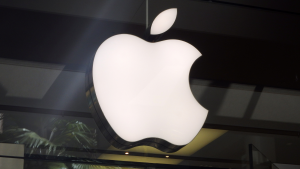
I thought about putting Microsoft (NASDAQ:MSFT) on my list of blue-chip stocks to buy for safety over Apple (NASDAQ:AAPL). However, it’s down 19% over the past year, so it doesn’t meet my criteria. AAPL stock is up 1.9% over the past 12 months. And its three- and five-year annualized total returns are 40.1% and 31.1%, respectively.
Apple is Berkshire Hathaway’s (NYSE:BRK-B) largest equity holding by a country mile for a reason. CEO Tim Cook keeps coming up with good ways to generate and grow revenue and profits.
In March 2017, I said Apple was a value play: “Currently, Apple stock’s trailing 12-month free cash flow is $52.5 billion or $9.72 per share; an FCF yield of 6.9% based on its March 27 closing price of $140.88. By comparison, Microsoft has free cash flow of $3.49 per share for the trailing 12 months or an FCF yield of 5.4% based on its March 27 closing price of $65.10.”
Today, Apple’s and Microsoft’s FCF yields are 4.4% ($107.58 billion in TTM FCF divided by $2.42 trillion market cap) and 3.6% ($65.15 billion TTM FCF divided by $1.83 trillion market cap), respectively. While they’ve both gotten more expensive over the past five years, Apple remains the value play of the two. However, I don’t think MSFT is a bad bet if you can afford to buy both.
Apple has excellent free cash flow and a strong balance sheet and possesses structural tailwinds that should be sustainable in a slowing economy, Treasury Partners Chief Investment Officer Richard Saperstein recently told Barron’s.
In short, AAPL stock is as blue-chip as they come.
Tesla (TSLA)

It’s hard to believe Tesla (NASDAQ:TSLA) is considered a blue-chip company, but the numbers don’t lie. Over the past three fiscal years, the electric vehicle maker’s operating income has grown more than 8,000%, from $80 million in 2019 to $6.5 billion in 2021. On a trailing 12-month basis, Tesla’s been generating operating profits since June 2019.
The business has gotten so brisk that the company is considering opening a gigafactory in Ontario or Quebec to take on some of the company’s manufacturing needs for North America. According to reporting from Electrek, Canada’s Minister of Industry and Innovation Francois-Philippe Champagne is rumored to have visited Tesla’s California plant as part of the current discussions to make a Canadian plant a reality. As a Canadian, I think that’s a wise idea. Canada has an automotive history that dates back to the early 1900s.
Tesla wants to produce 20 million vehicles annually in North America by 2030. A factory in Canada would certainly help make this possible. The company says it needs eight more factories to meet its goals.
While there are many reasons why someone might buy Tesla stock, the fact that it’s been able to cut its cost to make each vehicle from $84,000 in 2017 to $36,000 today is a big reason why it’s become so profitable.
With annualized total returns of 20.2%, 165.6% and 64.3% over the past one-year, three-year and five-year periods, respectively, I wouldn’t bet against Tesla.
UnitedHealth Group (UNH)
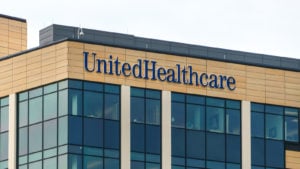
The second of two healthcare companies on my list of blue-chip stocks to buy for safety, UnitedHealth Group (NYSE:UNH), is a leading provider of healthcare-related services through four operating units.
United Healthcare provides healthcare benefit plans to millions of Americans through employer and individual plans. Optum Health provides basic healthcare services through more than 60,000 affiliated physicians. Optum Insight is the company’s tech unit that provides data analytics and consulting to the healthcare industry. Lastly, Optum RX is the company’s pharmacy benefit manager and pharmacare business.
Together, the four businesses generated revenue of $80.3 billion and operating profits of $7.1 billion in Q2, up 13% and 19%, respectively, year over year. Management expects full-year 2022 adjusted EPS of $21.65 at the midpoint of its guidance. Based on its current share price, it trades at 24.1x its projected 2022 earnings, slightly higher than its five-year average.
Every once in a while, the subject of universal healthcare is raised by politicians and investors get nervous that, if this were to happen, UnitedHealth would be out of business. That’s unlikely. Switzerland has universal coverage that’s required by law. Private insurers provide basic coverage with supplemental insurance available for additional services not covered by the basic plans.
Analysts love UNH stock. Of the 26 covering it, 22 rate it a “buy” or “overweight,” and the average price target is $585.91, 12.5% above the current price. Shares have delivered an annualized total return of 26.5% over a one-year period, 31.8% over a three-year period and 22.4% over a five-year period.
Southern Co. (SO)
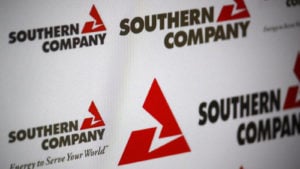
Southern Company (NYSE:SO) is the second of two utilities on my list of blue-chip stocks to buy for safety. The Atlanta-based company serves 9 million customers in Georgia, Alabama, Mississippi, and elsewhere through seven operating subsidiaries.
The company’s second quarter was good, with operating revenue of $7.2 billion, 38.6% higher than a year earlier. Over the first six months of the year, revenue increased 24.7% to $13.9 billion. Revenue was higher due to increased fuel costs and an exceptionally warm second quarter, which led to higher electricity use for air conditioning units. Excluding one-time items, earnings for the second quarter were $1.14 billion, 28.4% higher than a year ago. In the six months ended June 30, they increased 12.6% to $2.18 billion.
Financially, the utility’s doing just fine. It added close to 12,000 residential electric customers during the second quarter and an additional 7,000 customers for gas. In Q2, 48% of the energy used to serve its customers was natural gas, followed by coal (20%), renewables (17%) and nuclear (15%).
In early August, the U.S. Nuclear Regulatory Commission permitted the company to begin operating Vogtle Unit 3, the utility’s 45.7%-owned nuclear reactor in Georgia. Three other utilities own the rest of it. Unit 4 is still under construction, but it’s expected to be operating by the end of 2023. They are the only commercial reactors being built in the U.S. at the moment.
Unit 1 of the Vogtle plant has been in operation since 1987. Vogtle 2 went into service in 1989. Once all four are operating, nuclear power should become a more significant piece of the Southern Company pie, surpassing coal. That’s a good thing.
SO stock has delivered an annualized total return of 22.3% over a one-year period, 12.4% over a three-year period and 12.2% over a five-year period
Costco Wholesale (COST)
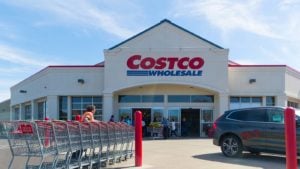
Costco Wholesale (NASDAQ:COST) is one of the best stories in retail. The company’s membership warehouses continue to see a growing customer base of loyal shoppers. Yielding less than 1%, investors don’t buy COST stock for the dividend. However, over the past year, shares delivered a total return of 9.5%, almost 24 percentage points higher than the entire U.S. market. The three- and five-year annualized return numbers are even more impressive, up 21.9% and 26.6%, respectively.
Given our inflationary times, Costco’s value proposition makes it even more attractive as a long-term buy. Historically, the company has made most of its profits from its annual membership fees, passing on savings from suppliers in the form of lower prices.
In August, the company’s same-store sales increased 10.1% year over year, with retail sales of $17.55 billion in the month. Excluding gas and foreign currency exchange, its same-store sales increased 8.7%, with a substantial 11.7% increase from its Canadian locations. For the 52-week fiscal year ended Aug. 28, Costco’s revenues rose 15.9% to $222.7 billion.
As far back as 2012, I’ve been a big fan of Costco. It operates one of the world’s best businesses. Part of the success is the business model. However, it ultimately comes down to the people. Costco’s talent separates it from other discount retailers.
COST is a buy whenever you have money to invest in blue-chip stocks. In my opinion, it’s in a league of its own.
On the date of publication, Will Ashworth did not have (either directly or indirectly) any positions in the securities mentioned in this article. The opinions expressed in this article are those of the writer, subject to the InvestorPlace.com Publishing Guidelines.
